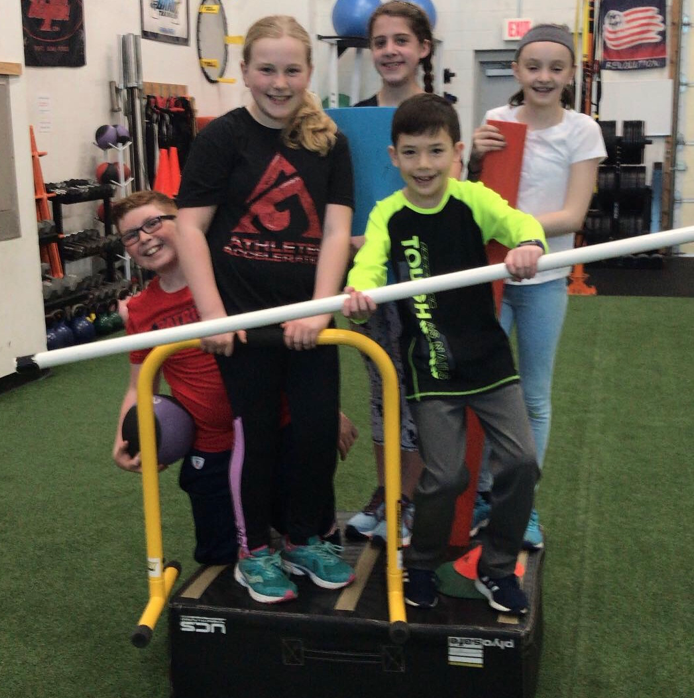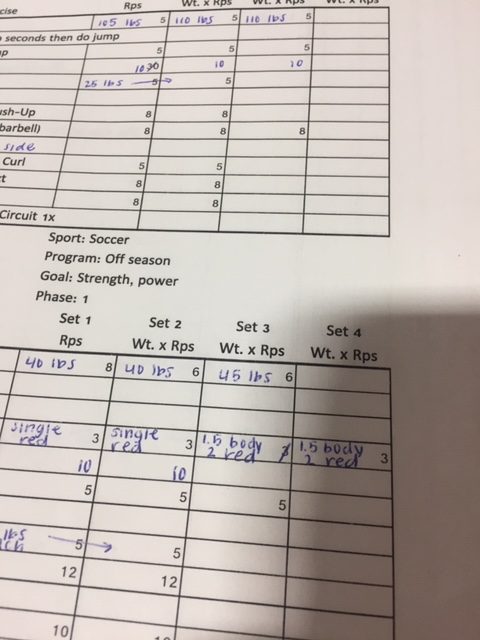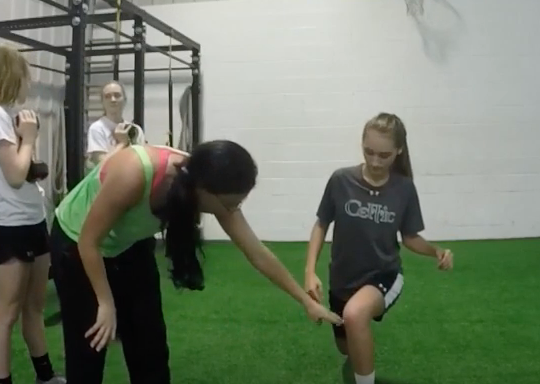
10 May A Day In The Life Of A Youth Strength Coach
Ever have a perception of something or someone, until you got a better perspective?
Public perception in the fitness industry as a whole is driven largely by every form of media.
Unfortunately, this leaves little difference in the public eye between a true professional and a hobbyist, or even worse a scam artist.
The same can be said for the strength and conditioning segment of the occupation I hold so close to my heart.
By extension, this translates to the conundrum of value or lack thereof. The most passionate of us seemingly arrive at the gym and coach our tails off like it was second nature.
I want to by crystal clear that this piece by Erica and I is by no means a way of patting ourselves on the back or a pity party because we work as long and as hard as our counterparts all over the world.
This article is to shed light on the fact there is more than meets the eye. To point out not all coaches and programs are the same. We want people to know how important a strength coach can and should be in a child’s life.
What you are about to read will give you insight when choosing a local or online strength coach for a budding young player.
When parents expecting more speed, strength power in a 12-week block of time, drop their aspiring young player into our lobby, there is no possible way they could know the amount of time and effort that has been put into the session that’s about to take place.

You see, there are many, many hours that go into being a coach, a mentor…a game changer for the kids we train. To give developing young athletes what they need and deserve to develop on and off the field…a day in the life of strength coach begins far before they step in the gym.
The low hanging fruit of this discussion is undoubtedly the programs we write for your athletes.
Programming is tedious, time consuming, and at times, a punishing creation. A true professional will consider science, research, experience, assessment, and innovation to meet the needs of the client(s) they serve.
In season, off season, injury history and status, ability level, physical and mental maturity and training frequency are more factors that are considered as programming is written out.
The litmus test for me: if any professional I admire walks into one of my sessions, am I proud of what they see me doing?
Furthermore, can I tell them the reasoning behind every exercise, regression and progression? If the answer to all is yes…then it passes muster.

Sure, there are other business-related aspects of coaching that are necessary before we turn on the lights in our respective facilities. That’s all part of the gig.
Why all this you say? Because it’s our job.
This doesn’t make us special, but it does make us responsible coaches, who practice our craft as true artwork.
Moreover, it makes us role models who teach kids lessons far beyond the gym. <— For more, read How Sports Transform Lives

Now that we’ve explored the bare minimum, I’ll let Erica share the meat and potatoes of what we do behind the scenes.
Get ready to have your your mind blown:
What Being A Youth Strength Coach Is Not
Thank you, Dave, for the thorough intro on what being a youth strength coach entails. I’ll admit: there are only a handful of people I respect in this industry and trust working with the next generation of athletes. Dave is one of them.
Now, in order for me to dive deeper into what it looks like to practice as a coach in this space, let me tell you what being a youth strength coach is NOT:
- Wearing sweatpants and blowing a whistle
- Scribbling workouts on a white board the moment kids walk in the facility
- Yelling at kids to “work harder!” or “run faster!”
- Making kids sweat just because
Yeah. In over 7 years of working in youth strength and conditioning, I’ve done none of these. And other professionals like Dave can say the same.
In fact, Dave always tells me, “anyone can make a kid sweat, but not everyone can develop them for the long run.”
And by long run, he means safe, effective and periodized training programs that are a minimum 2x a week. For over three months. Ideally, a year.
Oh, and they’re designed on a rainy Sunday afternoon at the coffee shop.

Of course, I don’t want to get into what it’s like writing youth strength and conditioning programs too much.
To be succinct, here’s what you need to know:
– Youth programs must be periodized so kids are progressing and not overtraining
– Youth programs must be individualized so kids are working on what they need to improve
– Youth programs must be tweaked on the fly so kids are adjusting their workouts on how they feel that day
– Youth programs must be coached by a professional so kids are optimizing speed, strength and agility patterns without hurting themselves
– Youth programs must be designed for hours, in fact, a full day sometimes, so kids are being serviced with the greatest effort
Let me expound off the last point: every time I hand an athlete their program binder, I chuckle on the inside.
In their eyes, they see a binder, with 100 sheets of paper, Excel tables, and set/rep schemes beautifully hole punched and organized.
What they don’t see: the youth strength coach churning it out for 6 hours on a Saturday afternoon.
Alas, I digress.
I don’t want to make this all about programs.
Taking the conversation back to yelling at kids, yeah. I don’t do that. The way I see it is, the more I commentate sessions like the CrossFit Games on ESPN, the more I’m taking away from the athletes’ enjoyable time in the gym.
After all, the gym is meant for them to escape from the daily stressors of school and life.
Rarely, do I yell.
I owe it to my stoic demeanor and the “hard work pays off” culture of my gym, which are enough for kids to come into my workouts with hustle and grit.
Too, there’s far more that goes on beyond the actual workouts.
Little acts of kindness and care that permeate outside of the gym should also be a bare minimum in the youth strength and conditioning world.
I can name several:
– Attend athletes’ games for support as well as program design
– Provide college recruiting advice over the phone
– Purchase protein bars to instill proper nutrition post-workout
– Reach out to college coaches to give our athletes glowing recommendations
– Text an athlete “good luck” before tryouts
– Travel over an hour to watch an athlete in a tournament
– Send an injured player workouts to do at home
– Email recovery exercises to a team after a tournament weekend
– Sit down and listen to an athlete in the facility office as she has a break down and is in tears
– Point out the most minute of details in an athlete’s mechanics so they are safeguarded from injury

Shockingly, these are all glossing over the tip of the iceberg.
There’s so much more that goes on behind-the-scenes. And don’t get me started on the administrative noise – from invoices and billing, to email drafting, to updating my Google calendar, to online consulting, to systems investing, to blogging, to social media-ing, to writing Total Youth Soccer Fitness, to predicting Aria’s next move in Game of Thrones.
And this all is occurring as I struggle to maintain a picturesque physique, chic French nails, voluminous hair, and glowing skin.

It’s a vast amount of work – coaching, creative, and personal pursuits – especially when your friends are out happy hour-ing like rockstars.
Sometimes, it’s hard to be the nerd saying, “sorry, I’m too busy writing undulating periodization programs.”
LOL.
But you know what?
I. Freaking. Love. It.
Admittedly, the behind-the-scenes work of a youth strength coach is just a bigger metaphor for their main role: to build athletes in the gym when no one is watching.


No Comments